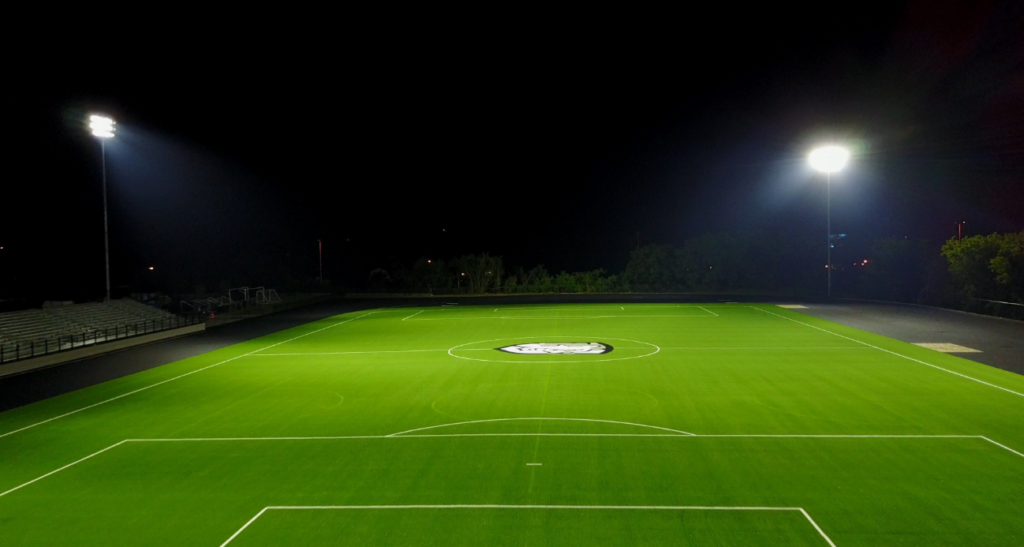The official dimensions of a World Cup soccer field are 100-110 meters in length and 64-75 meters in width. These dimensions are standardized by FIFA to ensure consistency across all international matches. The size of the field allows for optimal gameplay and fair competition among teams. Hosting the World Cup requires adherence to these specific measurements, creating a level playing field for all participating nations. The dimensions of a soccer field play a crucial role in the dynamics of the game, influencing strategies, player positioning, and overall match outcomes.
Understanding the significance of these dimensions is essential for both players and fans to appreciate the intricacies of the sport at the highest level.
World Cup soccer field dimensions

History- World Cup soccer field dimensions
Soccer, also known as football in many parts of the world, has a rich history dating back to ancient times. The game has evolved over the years, and so have the dimensions of the soccer field. Understanding the history of soccer field dimensions provides valuable insights into the sport’s development and the impact it has on the game.
Evolution of Soccer Field Dimensions
As the popularity of soccer grew globally, the need for standardization of field dimensions became apparent. The evolution of soccer field dimensions can be traced back to the early days of the sport when matches were played on varying sizes of fields. It wasn’t until the establishment of formal rules and regulations that standard dimensions for soccer fields began to emerge.
Fifa Regulations- World Cup soccer field dimensions
FIFA, the governing body for international soccer, has established regulations for the standard dimensions of soccer fields in official competitions. These regulations ensure consistency and fairness in the game, as well as the safety of the players. Understanding the FIFA regulations for soccer field dimensions is crucial for both players and organizers to comply with the set standards.
Standard Dimensions According To Fifa
According to FIFA regulations, the standard dimensions of a soccer field must adhere to specific measurements. The length of the field should be between 100 meters (110 yards) and 110 meters (120 yards), while the width should be between{” “} 64 meters (70 yards) and 75 meters (80 yards). These dimensions provide a uniform playing surface for all international matches sanctioned by FIFA, including the prestigious World Cup.
Field Components
The soccer field consists of various key components that define its layout and dimensions, ensuring a standardized playing surface for all matches.
Length And Width
The standard dimensions of a soccer field include a length between 100 to 130 yards and a width between 50 to 100 yards, providing ample space for players to maneuver.
Goal Area and Penalty Area
The goal area, often referred to as the six-yard box, is located directly in front of the goal and extends 6 yards out from the goal line. The penalty area, also known as the 18-yard box, spans 18 yards from the goal line.
Corner Arcs and Center Circle
The corner arcs are marked at each corner of the field, with a radius of 1 yard, where corner kicks are taken. The center circle has a radius of 10 yards and is located at the midpoint of the field.
Variations
Explore the diverse variations of World Cup soccer field dimensions, determining the official sizes used in FIFA tournaments worldwide. From standard pitch measurements to unique field regulations, the dimensions play a crucial role in shaping the game’s dynamics and strategies.
Different Field Sizes For Various Tournaments
The FIFA World Cup requires a minimum field size of 110 yards long and 70 yards wide, but it can be as large as 120 yards long and 80 yards wide. This is larger than the standard field size used in most international matches. On the other hand, the UEFA Champions League has a smaller field size, with a minimum length of 100 yards and a maximum width of 64 yards. This is because many of the stadiums used for the Champions League are smaller than those used for international matches. Other tournaments also have variations in field size.
Field Size Impact on The Game
The size of the field can impact the game in various ways. A larger field can lead to more running and a faster-paced game, while a smaller field can result in more physical play and a slower game. Teams may also have different strategies depending on the field size. A team with fast players may benefit from a larger field, while a team with more physical players may prefer a smaller field. In conclusion, while the standard field size for international matches is 100-130 yards long and 50-100 yards wide, there are variations in field size for different tournaments.
Impact on Gameplay
When it comes to the FIFA soccer field dimensions, the size and layout of the playing surface have a significant impact on the game’s dynamics. Understanding the influence of field dimensions on strategy and tactics is crucial for players, coaches, and fans alike. Let’s delve into how the dimensions of a soccer field can affect the gameplay.
Influence of Field Dimensions on Strategy And Tactics
The dimensions of a football field size in feet directly impact the strategies and tactics employed by teams. A smaller field may lead to a more compact style of play, emphasizing quick passing and close ball control. Conversely, a larger field encourages expansive play, with teams looking to exploit space and create scoring opportunities through wide attacks.
- Smaller fields promote a high-pressing defensive strategy, as there is less room for opponents to maneuver.
- Larger fields allow for more strategic positioning and the utilization of width to stretch the opposition’s defense.
- Field dimensions also influence set-piece tactics, with teams adapting their approaches based on the available space in the attacking and defensive areas.
The size of the playing surface can also dictate the tempo of the game. A smaller pitch tends to result in a faster-paced, frenetic style of play, while a larger field may lead to a more measured and patient approach, as teams seek to maintain possession and control the game’s rhythm.

Impact on Player Positioning And Movement
The dimensions of a FIFA soccer field can significantly affect player positioning and movement. In a smaller field, players are often closer together, requiring quick decision-making and precise movement to create scoring opportunities. On the other hand, a larger field allows for more expansive player positioning, enabling teams to spread out and utilize the entire width of the pitch.
- Midfielders and wingers may have more space to exploit on a larger field, allowing them to cover greater distances and influence the game from wider areas.
- Defenders may need to adjust their positioning and communication based on the dimensions of the field, ensuring proper coverage and support across the entire defensive line.
- Forwards may need to adapt their movement and off-the-ball runs based on the available space and the positioning of the opposition’s defense.
Understanding the impact of field dimensions on gameplay is essential for teams and coaches to develop effective strategies and adapt their tactics based on the specific characteristics of the playing surface.
Maintenance
The World Cup soccer field dimensions are carefully maintained to meet FIFA regulations, ensuring a standard playing area of 100-110 meters in length and 64-75 meters in width. The pitch is meticulously tended to provide a level playing surface for the world’s top footballers, meeting international standards for the highest level of competition.
Importance of Maintaining Correct Field Dimensions
Maintaining the correct field dimensions for a soccer pitch is crucial for ensuring fair play and the integrity of the game. The football field size in feet and football field size in square meters must adhere to specific standards to provide a level playing field for all teams.
Ensuring Proper Field Maintenance
Regular inspection and upkeep of the 11-sided football ground size are essential to prevent any deviations from the official dimensions. This includes mowing the grass to the required length, marking the lines accurately, and ensuring proper drainage to maintain the quality of the playing surface.
A well-maintained pitch not only enhances the playing experience for athletes but also reduces the risk of injuries. By adhering to the recommended maintenance practices, organizers can create a safe and professional environment for World Cup matches.
Implementing Correct Goal Size
Another critical aspect of field maintenance is ensuring the correct goal size. This involves regularly checking the dimensions of the goalposts and crossbar to confirm compliance with the official regulations set by FIFA.
Regular maintenance checks can help identify any potential issues with the goal structure and ensure that it remains in optimal condition throughout the tournament. Properly maintained goals contribute to the overall fairness and excitement of World Cup soccer matches.
Future Trends
The future trends of World Cup soccer field dimensions indicate a potential shift towards larger fields to accommodate faster gameplay and promote strategic maneuvering. With an emphasis on player safety and enhanced viewing experiences, these changes aim to elevate the sport’s global appeal and create more dynamic matches.
Potential Changes In Soccer Field Dimensions
As the game of soccer continues to evolve, so does the need for changes in the dimensions of soccer fields. Here are some potential changes that could be seen in the future:
Smaller Fields For Youth Soccer
Youth soccer leagues are already starting to adopt smaller fields, as it allows for more touches on the ball and encourages players to develop their skills. This trend could continue to grow in the future, with more leagues adopting smaller fields for younger age groups.
Larger Fields For Professional Soccer
On the other hand, professional soccer leagues may consider increasing the size of their fields. This would allow for more space to create scoring opportunities and could make the game more exciting for fans to watch.

Adjustments To The Shape of The Field
While the traditional rectangular shape of a soccer field has been the standard for decades, there have been discussions about experimenting with other shapes. For example, a diamond-shaped field could encourage more diagonal runs and creative playmaking. The future of soccer field dimensions is uncertain, but changes could be on the horizon. Whether it be for youth leagues, professional leagues, or experimenting with different shapes, these potential changes could have a significant impact on the game of soccer.
Conclusion
Understanding the official dimensions of a soccer field is crucial for players and fans alike. Whether it’s the FIFA World Cup or a local match, the field size plays a significant role in the game’s dynamics. Knowing these dimensions adds depth to the appreciation of the beautiful game.



